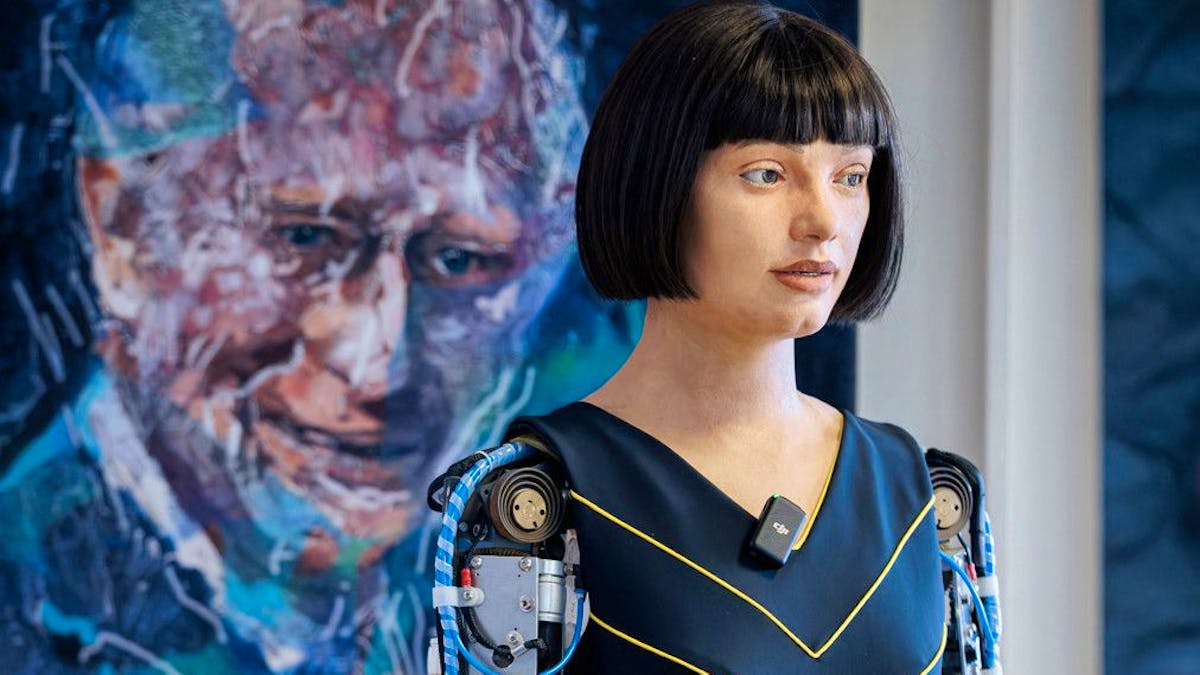Ai-Da unveiled this week its new portrait of King Charles III, showing a three-quarter-length sovereign with a smiling face and a flower in his buttonhole, but the robot painter claims to have no intention of “replacing” humans.
Ai-Da is a gynoid – a robot with the appearance of a woman. Late last year, his portrait of the famous English mathematician Alan Turing (1912-1954), one of the founders of computing, sold for $1 million at auction. It was the first time that a work by a humanoid robot had gone under the hammer.
But during the presentation in Geneva (Switzerland) of his oil painting “Algorithm King”, designed using artificial intelligence (AI), on the sidelines of the “AI for the common good” summit, the humanoid explained that the value of his work could not be measured in money.
“The value of my art is to serve as a catalyst for discussions exploring the ethical dimensions of new technologies,” Ai-Da told AFP at the British diplomatic mission, where the new portrait of King Charles will be on display.
The idea, the machine insisted in a British accent, was to “stimulate critical thinking and encourage responsible innovation for a more equitable and sustainable future.”
The ultra-realistic robot, one of the most advanced in the world, is designed to resemble a woman with a realistic and relatively expressive face, large hazel green eyes and bobbed hair (a wig). It is named in honor of Ada Lovelace, a pioneer in computer science in the first half of the 19th century.
The humanoid’s arms hide nothing of their robotic nature: the metal is visible, and they can be exchanged depending on the artistic activity that Ai-Da wants to practice, whether painting, drawing or sculptures.
“Risks and limits”
For AFP, the gynoid describes his methods and inspirations: “When I create my art, I use a variety of AI algorithms” and “I start with a basic idea or concept that I want to explore, then I think about the purpose of the work. What will she express?
“King Charles used his position to raise awareness of environmental conservation and interfaith dialogue. I designed this portrait to celebrate that,” says Ai-Da, hoping that King Charles “will appreciate (her) efforts.”
Aidan Meller, a specialist in modern and contemporary art, led the team that created Ai-Da in 2019 with AI specialists from the Universities of Oxford and Birmingham (UK).
In the midst of a debate – which often turns into confrontation – between human creatives and AIs fed inexpensively on their talent and that of their predecessors, Aidan Meller wants to see in his robot an ethical artistic project, which is not there “to replace painters”.
Ai-Da agrees: there is “no doubt that AI is transforming our world, including the art world and forms of human creative expression,” but “I do not believe that AI or my art will replace human artists,” insists the robot.
Instead, its goal is to “inspire viewers to think about the positive use of AI, while remaining aware of its risks and limitations.”
When asked if a painting made by a machine can truly be considered art, Ai-Da insists that her “work is unique and creative.”
“Whether humans decide whether it is art or not is an important and interesting point,” adds the machine.

